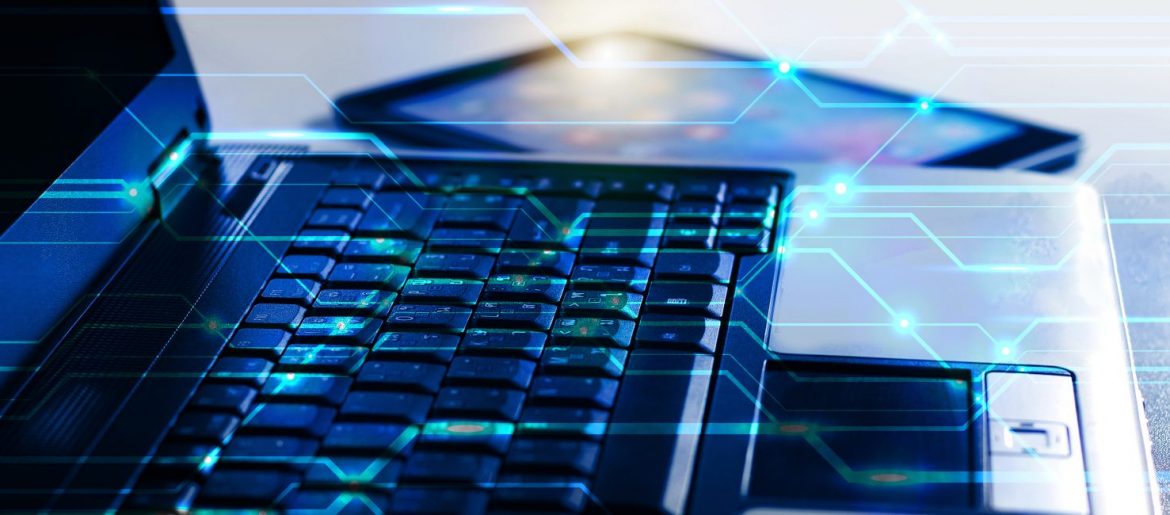
When it comes to cybersecurity, two main sectors of protection are network security and device security.
Network Security
When you install a firewall to monitor all internet traffic to and from your office, that is network security. This means you are protecting your “communication highway” and all of the different pieces of your technology infrastructure including computers, servers, mobile and IoT devices and cloud infrastructure.
Device Security
The next level would be computer security where the safeguards are placed at the endpoint, or device, level. Once a threat makes it past any network security, it can still be stopped by computer-based security measures. However, this only works if the device security measures are in place.
Additionally, computers and laptops are not always used in an office where they have consistent network protection. This is especially true now due to the COVID-19 outbreak.
Even before the pandemic, offices were becoming more mobile. Employees have been working remotely more often. This makes individual computer security even more vital to have in place.
94% of malware is delivered by email.
The most popular way to infect systems with malware is to send it by email and try to skip network security altogether. Hackers have switched to using malicious links in phishing attacks because the email doesn’t technically contain malware. It is just a link to malware and makes it harder to detect.
Computers need to be properly safeguarded with a variety of security measures to ensure the information and resources they have access to are protected.
How to Keep Business Computers Secure from Online Threats
Regardless of what may be happening in the rest of the world, the hacking industry continues to thrive. This shows up in the numbers reported in the 2020 State of Malware Report.
According to the report, businesses in Connecticut and the rest of the world have plenty to be worried about when it comes to computer security.
In 2019:
- Worldwide Windows malware increased 13% on business endpoints.
- For the first time, Macs overtook Windows PCs in the number of threats detected.
- Risk detections on business computers increased by 52%.
Good device security is really about sticking to the basics and ensuring computers are protected with a sound cybersecurity strategy that includes the following tactics:
Update Devices Regularly
It is extremely important to keep computers updated regularly because those updates often include vital security patches for newly discovered system vulnerabilities.
Hackers will diligently search for holes in a software until they find a back door through its code. As soon as these are discovered by the software manufacturer, they put out an update to the user to seal it. However, this only works if the user actually installs that update onto the system.
60% of data breaches happen because a vulnerability was exploited for which a patch was issued but never applied.
It is best to have computers on an automatic update system or managed services plan so updates can be automatically installed for the following:
- Operating system
- Software/applications
- Firmware
Do Not Run Computers on an Administrator Account
Most computer users will log in their Windows or Mac device with administrator privileges. This makes it easy to do things like install software or make other system changes.
However, using the administrator account all day also gives an open door to hackers. Once their code is injected into your computer, they are able to execute all types of commands due to the permission level of the user account.
So what is the solution? It is safer to have users create a second user account that has limited privileges and use that account daily. If a program needs to be installed, they can log into the higher privileged account to do that and then switch back.
Use a Modern Antivirus/Anti-Malware Software
What we mean by “modern” antivirus/anti-malware is one that uses behavior-based detection of malware. If you are using an older or more basic antivirus that is signature-based only, then it will be missing a good deal of threats.
This is because a significant portion of dangerous malware is considered “zero-day” which means it is so new that it is not in any signature database yet.
Behavior-based detection looks for malicious behavior by code and continues to learn to detect new threats based upon new information.
Deploy Phishing Training & Protections
Phishing is the #1 threat when it comes to malware and other types of malicious attacks. In March 2020 alone, phishing jumped 667% as hackers took advantage of the international coronavirus crisis.
The following phishing safeguards will improve computer security significantly:
- Use DNS filtering to block malicious websites.
- Use email security that detects and blocks phishing emails.
- Conduct ongoing user awareness training about phishing.
Physical Device Security
Another important part of computer security is physical device security. This means preventing theft or unauthorized access to a computer.
Computers and laptops should be physically secured when not in use and stored in a safe place. They should also use screen locks that will lock the screen after a certain amount of inactivity.
There have been cases of data privacy compliance penalties due to sensitive information (like patient records) being left up on a screen of an unattended laptop. This is just one example of why physical device security is another critical layer of overall computer security.
Help Ensure Your Business Computers are Properly Protected
Device security can be challenging for a business when their work PCs are distanced due to employees working from home. Sound Computers can help you with a comprehensive plan that protects all PCs accessing business data.
Contact us today to schedule a free consultation. Call 860-577-8060 or reach us online.
